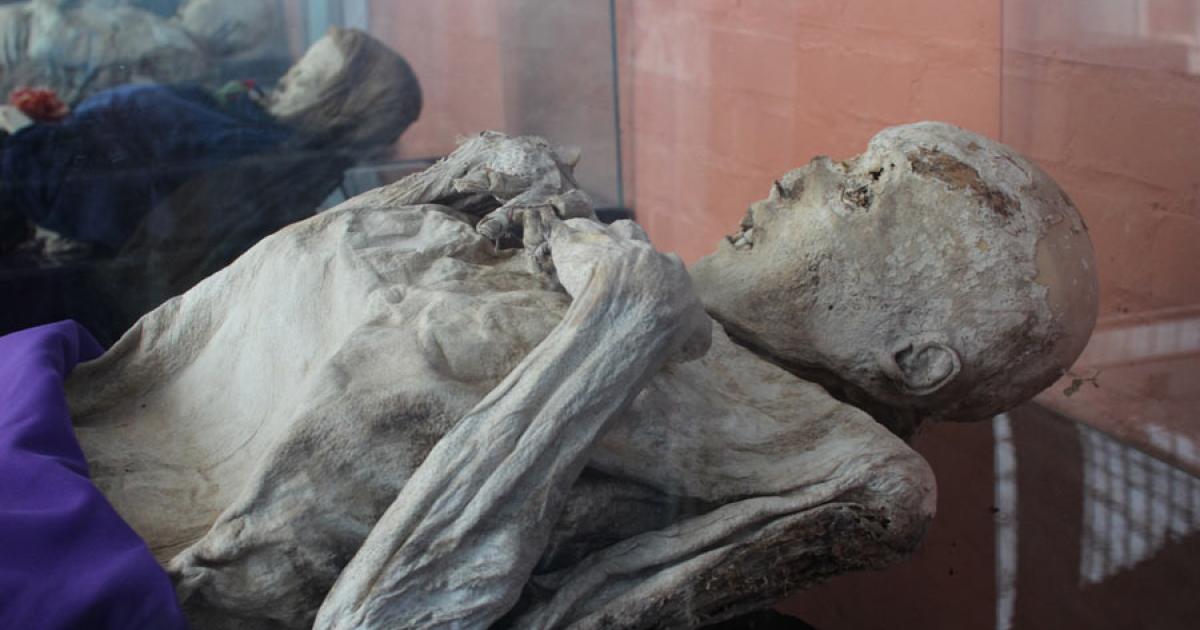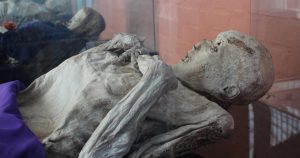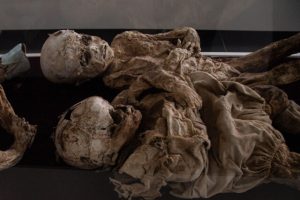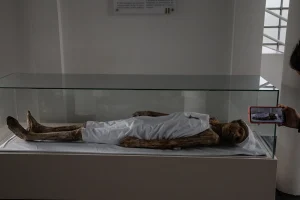The Mysterious Phenomenon of Natural Mummification in San Bernardo, Colombia

The Mysterious Phenomenon of Natural Mummification in San Bernardo, Colombia
Mummification has long been a practice tied to the ancient Egyptian civilization, which spent centuries perfecting techniques to preserve the bodies of the dead for the afterlife. However, in a small town in Colombia, there exists an extraordinary phenomenon that seems to mimic the effects of mummification—though in a much more natural and peculiar way. In the cemetery of San Bernardo, corpses appear to undergo a process of petrification, slowly turning to stone over time. This baffling occurrence has attracted the attention of scientists and researchers from around the world, hoping to uncover the causes behind this unique process of natural preservation.
The Discovery of Petrified Corpses
The mysterious phenomenon was first discovered by a gravedigger named Eduardo Cifuentes, who was working in San Bernardo’s cemetery 15 years ago. While renovating forgotten graves and tending to the area, Mr. Cifuentes noticed something unusual about the corpses buried there. Unlike typical burials where the bodies decompose, some corpses in this cemetery seemed to undergo a remarkable transformation. As Mr. Cifuentes described, the skin and clothes of the corpses began to acquire a distinct brownish color, with the skin appearing pale and wrinkled, similar to the effects of aging and mummification. However, unlike typical mummification, these bodies seemed to be turning into a petrified, almost stony state.
This strange process caught the attention of local researchers, scientists, and curious individuals, sparking a wave of investigation into what could be causing this unnatural phenomenon. What makes it even more intriguing is the fact that this petrification process happens naturally, without the need for artificial preservation or embalming techniques, which are commonly associated with ancient mummification practices.

The Science Behind Natural Mummification
Unlike the elaborate methods used by the ancient Egyptians, where bodies were carefully embalmed, dehydrated, and treated with resins, the corpses in San Bernardo seem to undergo a natural, almost passive mummification process. In general, mummification occurs when a body is preserved by a combination of environmental factors, such as dry conditions, low humidity, or specific chemicals in the soil. For the San Bernardo corpses, the conditions in the cemetery seem to be ideal for this phenomenon.
Several scientific theories have been proposed to explain the petrification process observed in San Bernardo. One possibility is that the cemetery is located in an area with high mineral content in the soil, which could contribute to the preservation of organic matter. Over time, the minerals may replace the body’s tissues, essentially turning them to stone. This type of fossilization, known as “petrification,” is commonly seen in plants and wood, but it is extremely rare in human remains.
The unique combination of humidity, soil composition, and environmental conditions in San Bernardo may create an environment where the bodies naturally undergo a petrification process. The bodies may not be turning completely to stone, but instead may be undergoing a type of mineralization that gives the appearance of stone-like preservation. This process would be slow and gradual, taking years or even decades for the transformation to occur.
Another possibility is that certain chemicals in the soil, such as calcium or silica, interact with the body’s organic materials over time, effectively replacing the organic components of the body with minerals. This would result in a corpse that looks like it has turned to stone, though it may still retain some semblance of its original structure.

The cemetery’s location in the small town of San Bernardo, Colombia, plays a crucial role in the development of this strange phenomenon. San Bernardo is situated in a region known for its rich, mineral-laden soil. The local climate, with its specific combination of temperature and humidity, may also contribute to the process. Like other well-known cases of mummification, such as those found in the arid deserts of Egypt or South America, the local environmental factors are likely key to the preservation of the bodies.
For example, in some parts of the world, where the air is dry and the soil rich in minerals, bodies may undergo a process known as “desiccation,” where the moisture is removed from the tissues, leaving behind a well-preserved corpse. In the case of San Bernardo, however, the presence of minerals like silica or calcium could allow for a different kind of preservation, one that results in the petrification or mineralization of the body.
In some ways, this process mirrors the fossilization of plants and animals that occurs when their remains are buried in mineral-rich environments over millions of years. Over time, organic material is replaced by minerals, leaving behind an impression of the original organism, often in the form of a stone-like structure.
The Mystery and Its Implications
While the natural mummification or petrification of corpses in San Bernardo remains a fascinating subject of study, the true causes of this phenomenon are still not fully understood. Despite extensive research and interest from scientists, there is much about the process that remains a mystery. Could the bodies in San Bernardo be the result of a rare and unique chemical reaction in the soil? Is this natural petrification caused by a specific combination of temperature, humidity, and minerals that occur only in this particular location?
The implications of such a phenomenon go beyond the realm of scientific curiosity. The discovery of petrified corpses offers a glimpse into the unknown potential of natural preservation, challenging our understanding of how the human body and other organic matter can survive over time. The study of these preserved bodies could also provide insights into ancient burial practices and the factors that influence the preservation of human remains across different cultures and environments.
Furthermore, the strange phenomenon in San Bernardo could open new doors for scientific exploration into the processes that govern life, death, and preservation. If such natural petrification can occur, what other processes might be at play in other parts of the world? The implications of this discovery could extend far beyond the boundaries of the cemetery, leading to breakthroughs in the fields of archaeology, paleontology, and forensic science.

Conclusion
The discovery of petrified corpses in San Bernardo, Colombia, represents a unique and mysterious phenomenon that continues to captivate the imagination of scientists and researchers alike. Unlike the ancient Egyptians’ carefully developed mummification techniques, this process occurs naturally, thanks to a combination of environmental factors that have allowed the bodies to transform into stone-like structures. While much remains unknown about the causes of this petrification, the mystery surrounding it serves as a reminder of the many hidden processes that shape the preservation of life and death on Earth.
As scientists continue to investigate this fascinating phenomenon, the mystery of the petrified corpses in San Bernardo remains one of nature’s most intriguing puzzles, and the town’s cemetery holds the promise of unraveling secrets from the past that have remained buried for centuries.